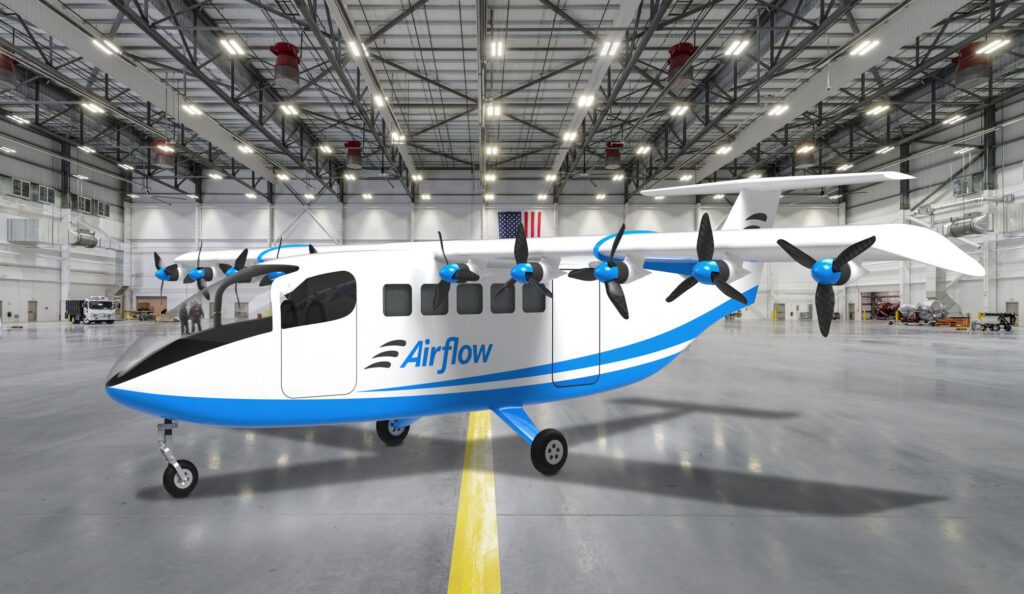
In January, Airflow announced that they would be moving from sub-scale model testing to a new testing phase using a remodeled Cessna 210. (Airflow)
The aerospace company Airflow has received 11 orders for its electric short takeoff and landing (eSTOL) aircraft totaling over $600 million in orders, the company announced on Aug. 17.
Airflow has two eSTOL aircraft variations, a Model 100 and Model 200. Airflow’s Model 100 is able to carry four passengers or 800 lbs of cargo, only needs 150 feet to take off, and has a 250-mile range. The company’s Model 200 has a nine-passenger or 2,000 lb cargo payload, needs 250 feet to take off, and has a 500-mile range. Both of these aircraft are 100 percent carbon neutral.
Airflow also named former Embraer CEO Paulo Cesar Silva to its advisory board, according to the release. Silva will advise Airflow on financing, manufacturing, and a commercial launch strategy.
“The future of aviation not only demands net-zero carbon emissions but also the ability to bring to market a much lower operating cost aircraft while meeting the needs of both passengers and operators,” Silva said in a statement. “The Airflow team has the right experience to effectively seize the opportunity of eSTOLs thereby changing the face of sub-regional transportation. I’m excited to work alongside Marc and the team and inform, through my own experience, a focus on customer needs and a compelling value proposition.”
Airflow’s eSTOL aircraft is predicted to enter service in 2025 and according to the company’s website, it will require no new infrastructure and fit within existing regulatory frameworks.
“The interest that we’re seeing from airlines worldwide for realistic eSTOL capabilities is incredible. This means we’re able to offer cargo and passengers operators value from day one by using today’s infrastructure, regulations, and use cases. In fact, customers will be able to expand their existing networks using our next-gen aircraft,” Marc Ausman, Co-founder and CEO of Airflow, said in a statement. “With Paulo advising Airflow he will aid us in continuing to focus on our North Star which is a commitment to solving real-world customer needs.”
The company’s eSTOL aircraft is able to land on short runways by using distributed electric propulsion providing control at slower airspeeds and a precision landing pilot assistance system, according to the company’s website. Airflow also uses an aerial operating system to manage aircraft in real-time.
In January, Airflow announced that they would be moving from sub-scale model testing to a new testing phase using a remodeled Cessna 210. The Cessna aircraft will be transformed into an eSTOL aircraft with distributed electric propulsion.